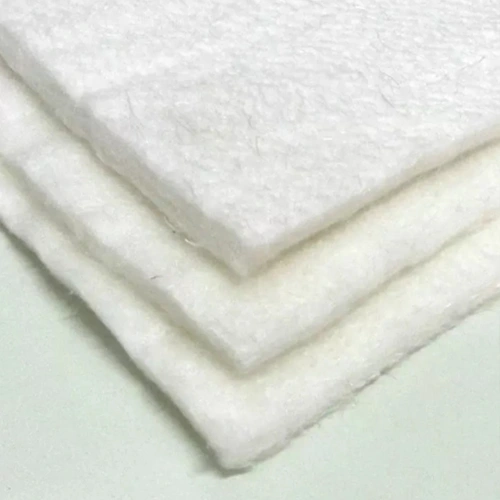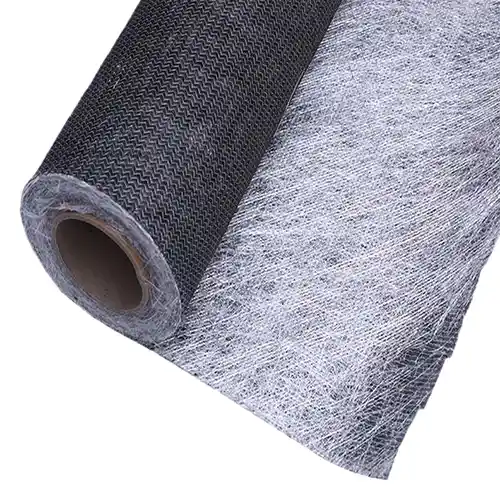Производство стекловолоконных матов Поставщик в Китае
- Опыт работы на производстве 16+
- Сертификация ISO, CE, BSCI, RoHS, SGS
- Профессиональные услуги oem и odm, универсальное решение.
- Цвет на заказ: белый, серый, черный и т.д.
- Настройка размеров: ширина 50-3800 мм, толщина 0,10-0,70 мм и т.д.
лет
Опыт работы на производстве
Проекты
Мы закончили
Клиенты
Над миром
Удовлетворенность
Производитель стекловолоконных матов
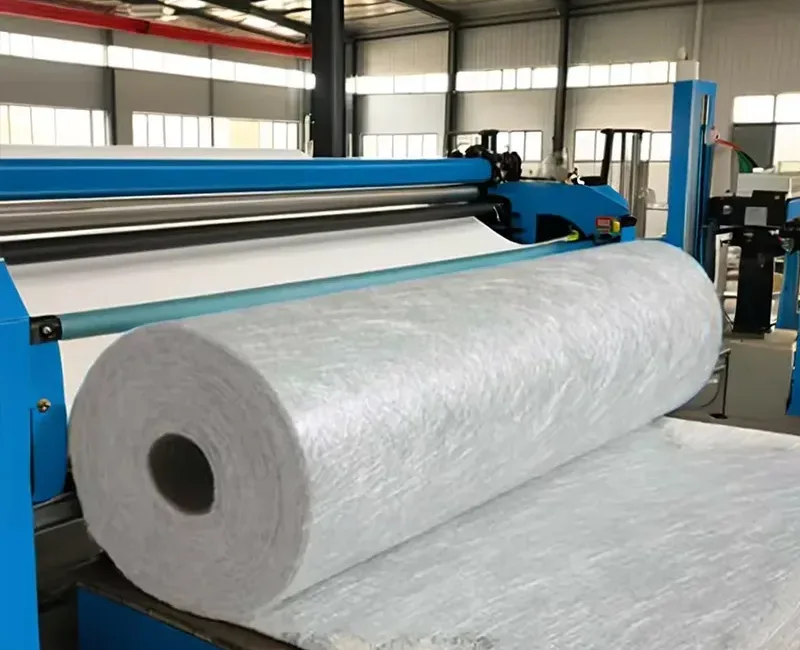
High-performance Automated Roller Press Machine
Our roller press machine provides uniform density compaction, and the rolling process also improves the surface quality of the fiberglass mat, making it smoother and more consistent, ensuring material strength and stability. It is also capable of handling a variety of different materials.
- Сертификаты ISO 9001, ISO 14001, CE, SGS, ASTM, OHSAS, ГОСТ и другие стандарты.
- 35 automated production lines.
- Good plasticity and fast resin penetration.
- High-quality raw materials: E glass, S glass, C glass and AR glass, etc.
- Strict tests: tensile
- strength, high temperature resistance, corrosion resistance, etc.
Профессия
Передовые технологии производства
Высокое качество
Высокое качество CE, ASTM, SGS, ISO, BSCI сертификации
Эффективная стоимость
Прямая заводская цена
На заказ
Различные размеры, цвета, конструкции, OEM/ODM
Сервис
Отличное обслуживание клиентов
Fiberglass Mat Hot Sale Series
Our fiberglass mats are available in bulk quantities with weights between 10 g/m² and 1300 g/m², with additional custom weights and widths available to suit your packaging needs.Worried about shipping? Rest assured that our wholesale fiberglass mats are wrapped in waterproof plastic and packaged in crash-resistant cartons or wooden boxes. Whether retail or wholesale, our custom options ensure your brand stands out. Enhance your product line with our premium fiberglass mats and leave a lasting impression on your customers.
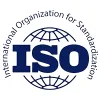


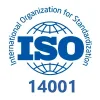





Различные типы стекловолоконных матов
Компания NQ Fiberglass уже более 16 лет производит широкий ассортимент войлока из стекловолокна, в том числе войлок из непрерывного волокна, войлок из рубленого волокна, бумагу с поверхностью из стекловолокна, войлок с иглами из стекловолокна и композитный войлок из стекловолокна. Мы также предлагаем изготовление на заказ по вашим спецификациям, таким как вес, длина, ширина, покрытие и упаковка. Это позволит вам избежать хлопот, связанных с обращением к нескольким поставщикам для удовлетворения ваших потребностей.
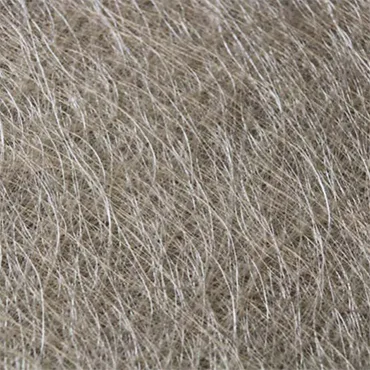
Маты из непрерывной нити
Войлок с непрерывной нитью изготавливается из нити и имеет нетканую структуру, содержащую нерастворимый клей. Этот войлок может использоваться как в ненаполненных, так и в наполненных смоляных системах и совместим с ненасыщенными полиэфирными, эпоксидными и полиаминными смолами.
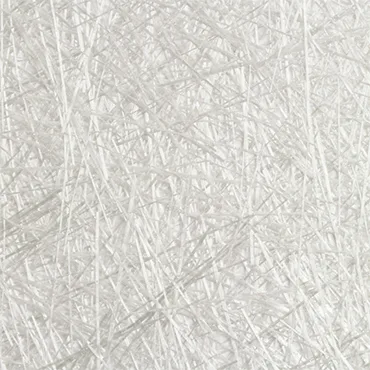
Коврик из рубленых прядей
Рубленый войлок изготавливается из рубленых нитей стекловолокна, скрепленных порошковым или эмульсионным клеем. В основном он используется для обработки и производства изделий из стекловолокна путем ручного ламинирования, намотки волокон и формования.
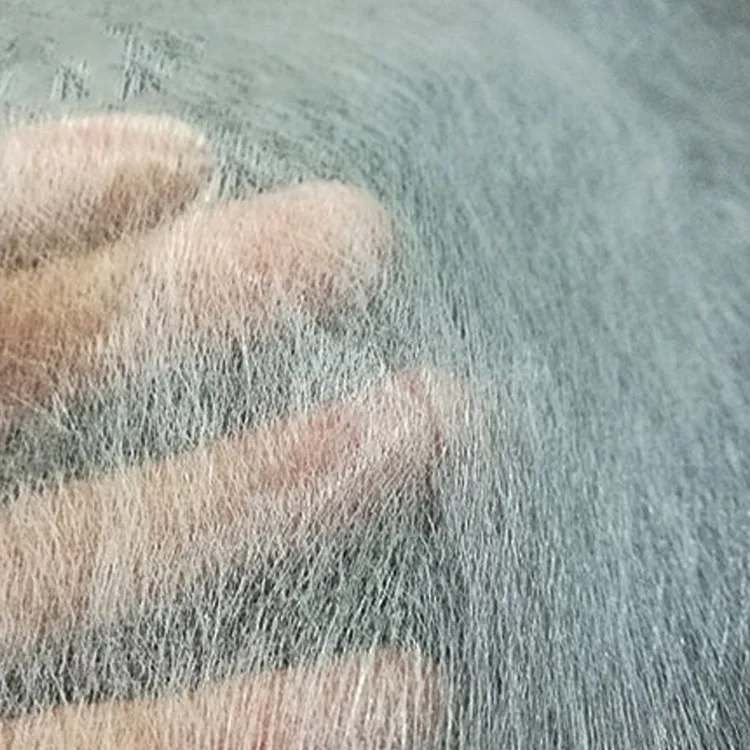
Поверхностная ткань из стекловолокна
Поверхностная бумага из стекловолокна используется в основном для обработки поверхностей изделий из стекловолокна. Она отличается равномерной дисперсией, ровной поверхностью, низким содержанием клея, способствует быстрому проникновению смолы и прочному сцеплению с формой. Этот продукт значительно повышает коррозионную стойкость, устойчивость к давлению и герметичность поверхности, а также обеспечивает длительный срок службы.
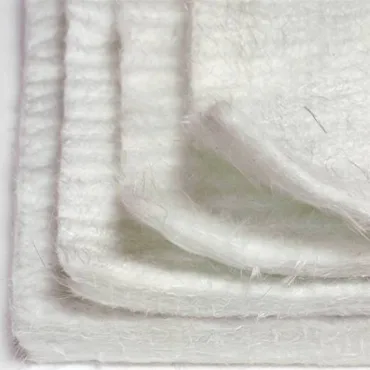
Стекловолоконный игольчатый коврик
Игольчатый войлок из стекловолокна идеально подходит для изоляции различных нагревательных элементов в трубопроводах благодаря своим микропористым и изоляционным свойствам. Кроме того, благодаря своим фильтрующим и звукопоглощающим свойствам он служит глушителем и пылесборником для бензиновых двигателей автомобилей и мотоциклов. Этот материал широко используется для звукоизоляции, влагоизоляции, предотвращения пожаров и т. д.
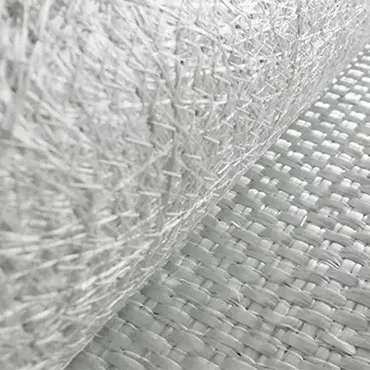
Комбинированный коврик из стекловолокна
Композитные накладки из стекловолокна обычно изготавливаются из стекловолоконных нитей, сплетенных в определенных направлениях или сшитых вместе с другими стекловолоконными тканями для достижения определенных целей. В зависимости от области применения, они могут иметь приоритет мягкости или прочности. В ассортименте представлены комбинированные подушечки без скручивания, комбинированные подушечки типа "сэндвич", комбинированные подушечки со стежками, пушистые фильтрующие подушечки и комбинированные подушечки с иглами.
Стекловолокнистые маты по GSM или OZ
GSM (граммы на квадратный метр) или OZ (унции на квадратный фут) - важный параметр при выборе стекловолоконных матов. Есть 1,5 унции, 2 унции, 100 г, 300 г, 450 г, 600 г и т.д.. Он напрямую определяет толщину стекловолокна в мате. При выборе выбирайте подходящий стекловолоконный мат в сочетании с областью применения. Как правило, низкий GSM обладает лучшей смачиваемостью и однородностью, а высокий GSM - более толстыми слоями и высокой прочностью.
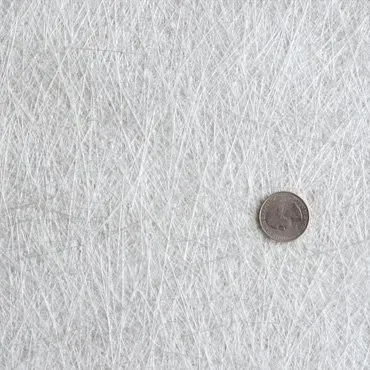
1.5 oz Fiberglass Mat
Weight: 1.5 ounce per square foot
1.5 oz fiberglass mat means that each square yard of fiberglass mat weighs 1.5 ounces (about 42.5 grams). This material consists of non-woven glass fibers and is commonly used to reinforce structures and provide additional strength and durability. It is often combined with resins or other reinforcing materials and is widely used in the manufacture of composite materials.

2 oz Fiberqlass Mat
Weight: 2 ounce per square foot
2 oz fiberglass mat is sold in continuous 50″ wide rolls and is suitable for use as a reinforcement material or surface treatment material. Its thinness makes it unsuitable for structural repairs as it does not provide sufficient strength; however, you can achieve the desired thickness and strength by stacking multiple layers if necessary.
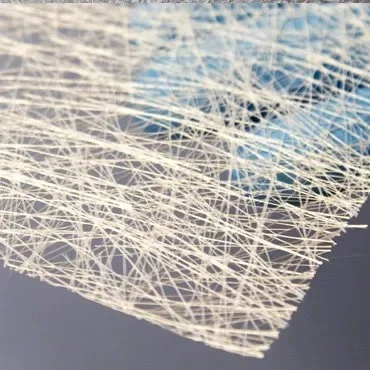
100g Fibreglass Matting
Weight:100g per square meter
100g fiberglass mat is usually used with resin, with fast wet and good transparency, and clear effect after drying. It is relatively thick and is one of the thicker of all surface materials. The common width is 1270mm, which is widely used in various occasions that require enhanced strength and durability.
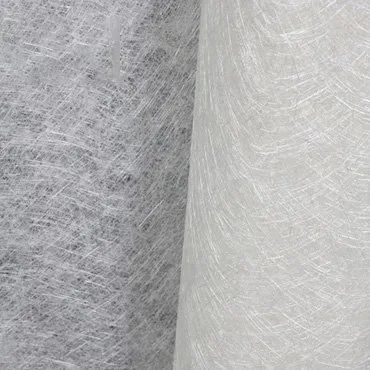
450g Fibreglass Matting
Weight: 450g per square meter
The 450g fiberglass mat has fast moisture absorption, allowing it to quickly interact with water and promote adhesive dissolution, helping accelerate the curing process. It is widely used in industries such as construction, automotive, and shipbuilding to enhance the strength and stability of composite materials.
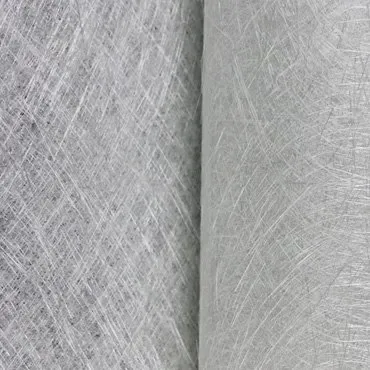
600g fibreglass Matting
Weight: 600g per square meter
The 600g fiberglass mat provides uniform strength in all directions, ensuring consistent performance of composite materials under different load directions. It is suitable for high-strength and high-durability applications in industries such as construction, automotive, and shipbuilding.
Chopped Strand Mat By GSM or OZ
GSM (grams per square meter) or OZ (ounces per square yard) is an important factor to consider when selecting Chopped Strand Mat. The choice should be based on the specific application. Lower GSM/OZ offers better penetration but may not provide adequate coverage of the underlying surface. On the other hand, higher GSM/OZ ensures improved stability and stiffness.
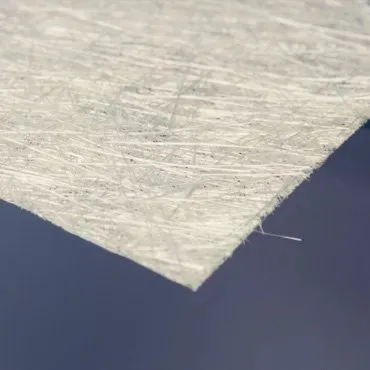
1.5 oz Chopped Fiberglass Mat
Weight: 1.5 ounce per square foot
The 1.5-ounce chopped fiberglass mat is commonly used with epoxy resin to quickly increase the thickness of parts or molds. It can be used as an interlayer material or on its own, and workers often tear the fibers during application to enhance the bonding effect.
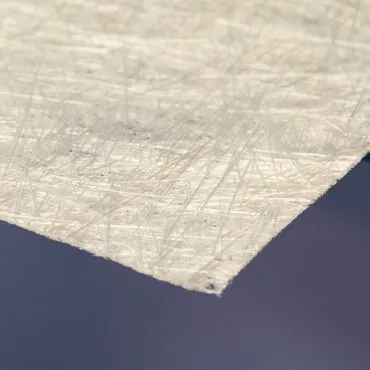
2 oz Chopped Fiberglass Mat
Weight: 2 ounce per square foot
The 2 oz chopped mat is made from medium-fine fibers and chopped glass filaments, bonded with polyester powder or emulsion. When resin is applied, it quickly dissolves the binder and absorbs the resin, becoming transparent and durable after drying. It is suitable for enhancing the strength and thickness of composite materials.
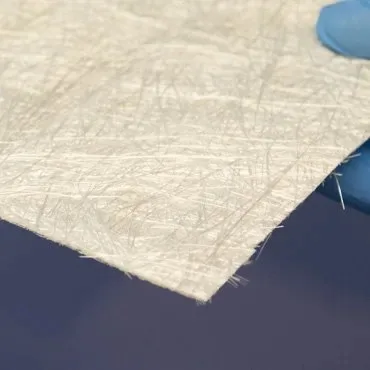
3 oz Chopped Fiberglass Mat
Weight: 3 ounce per square foot
The 3 oz chopped fiberglass mat is bonded with adhesive and comes in powder or emulsion forms. It is suitable for quickly increasing thickness but is not recommended for thick layers due to lower durability compared to higher GSM materials. It performs better on curved surfaces or small corners and is easy to cut or tear, making it convenient to use.
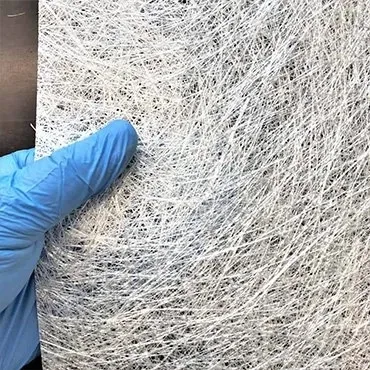
CSM 300 Fiberglass Mat
Weight: 300g per square meter
CSM 300 fiberglass mat is one of the most popular fiberglass products, with bundles of glass filaments bonded by powder or emulsion. When polyester resin is applied, the binder dissolves, making the mat soft enough to closely conform to different contours and surfaces. However, it is most effective and economical when used to build up the body and thickness, providing enhanced strength.
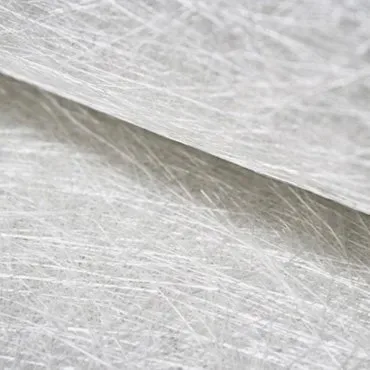
CSM 450 Fiberglass Mat
Weight: 450g per square meter
CSM 450 fiberglass mat is made from alkali-free chopped glass fibers bonded with powder or emulsion, typically used with resin to dissolve the binder and soften the mat. It is especially suitable for hand lay-up and winding processes, widely used in building structures, providing high strength and durability.
Fiberglass Mat By Different Applications
Fiberglass mat is used in various industries due to its strength and durability. In construction, it’s used for reinforcing concrete and creating composite materials. In the automotive and marine industries, it’s used to make lightweight, strong parts like body panels and boat hulls. It’s also used in wind energy for reinforcing blades, electronics for insulation, and industrial applications for molds and durable parts.
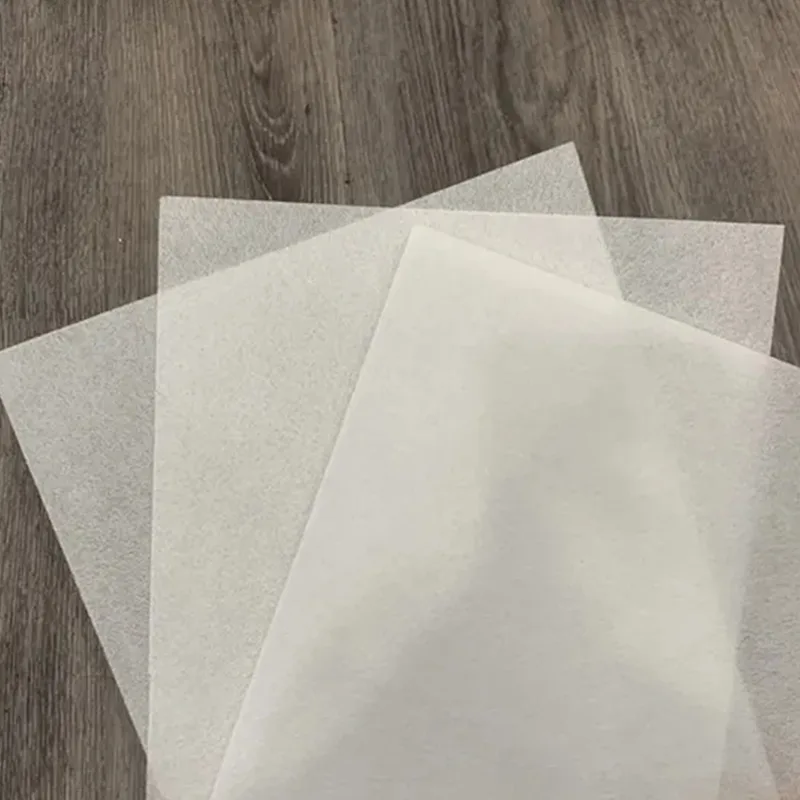
Flooring Tissue
The S-FLM series mat is mainly used as a substrate for soft plastic flooring and wallpaper. It features a smooth surface, no deformation, vibrant colors, and easy installation, making it an ideal material for residential flooring decoration. After further processing, it can be made into various colored laminates, making it perfect for decorating high-end hotels and stores.
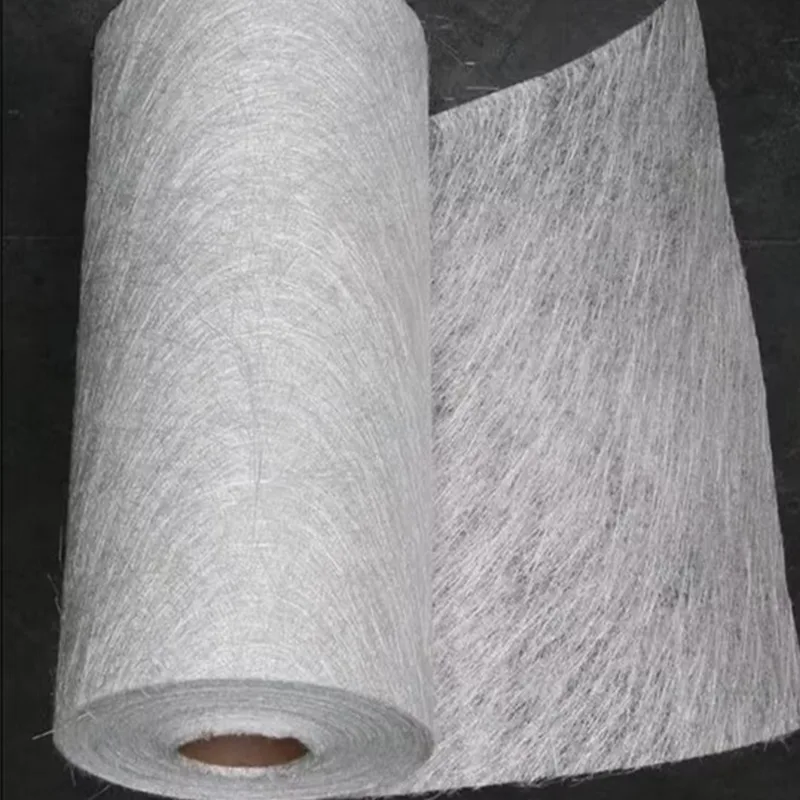
Carpet Tissue
The carpet felt series is mainly used as the substrate for carpet tiles. Carpet tiles made from fiberglass felt have a firm appearance, do not shrink or deform, and are ideal materials for indoor floor decoration.
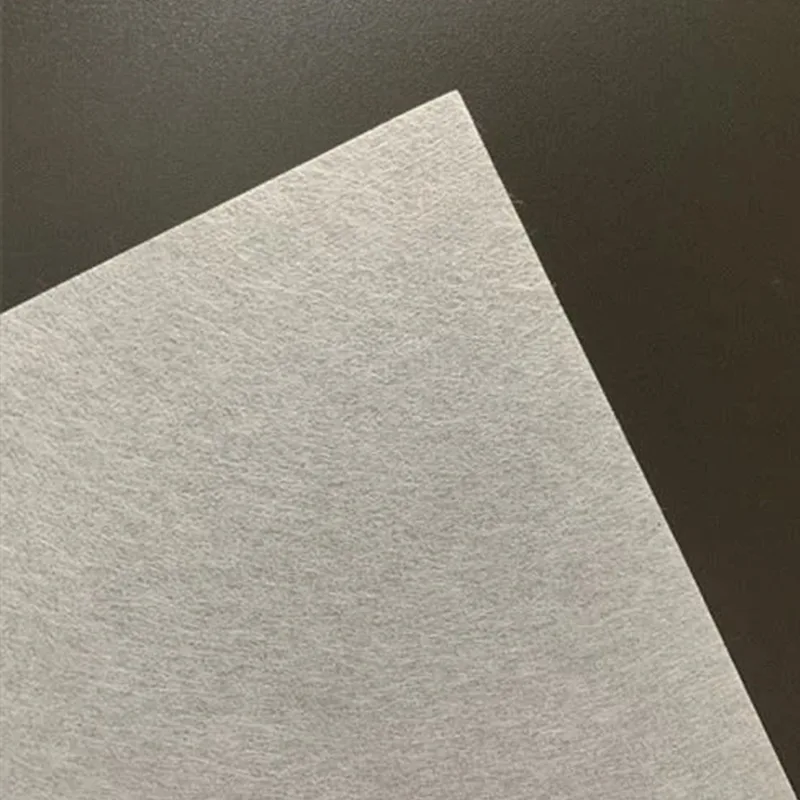
PCB(Printed Circuit Board )Tissue
PCB electronic felt is a key material for CEM-3 production. Our E-glass electronic products, developed in China, are used in CEM-3 steel plates. Tests show our fiberglass paper meets or exceeds import standards, with superior heat resistance, and is widely used in high-frequency and LED applications.
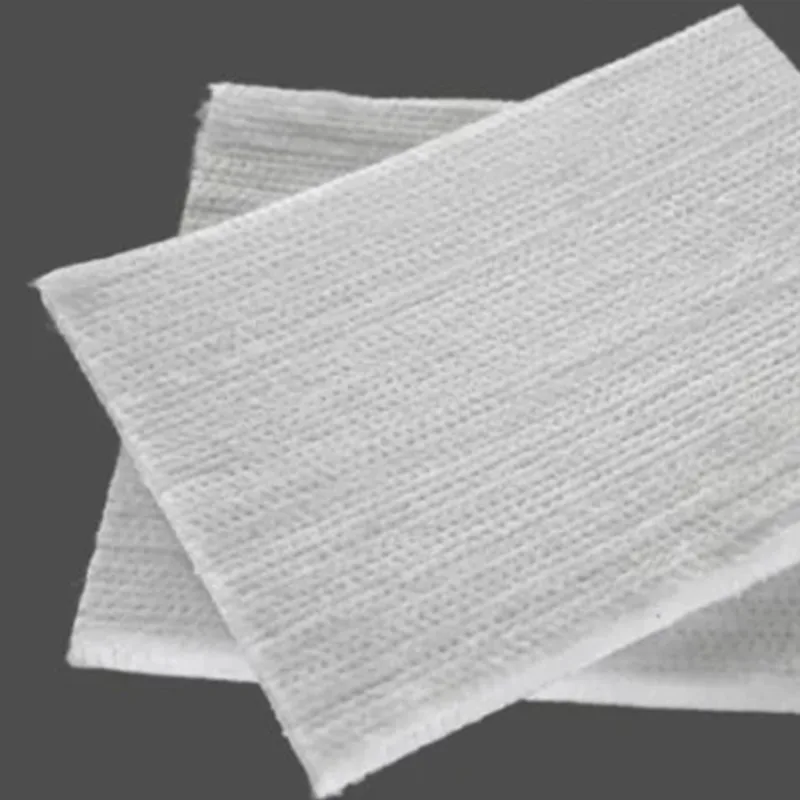
Insulation Tissue
Insulation felt is a high-quality material made from short-cut glass fibers using a wet-forming process. It has good fiber distribution, uniform thickness, high-temperature resistance, and low thermal conductivity, ensuring excellent insulation. The product is easy to install, energy-efficient, and cost-effective, suitable for waterproofing, underground pipelines, and both interior and exterior applications.
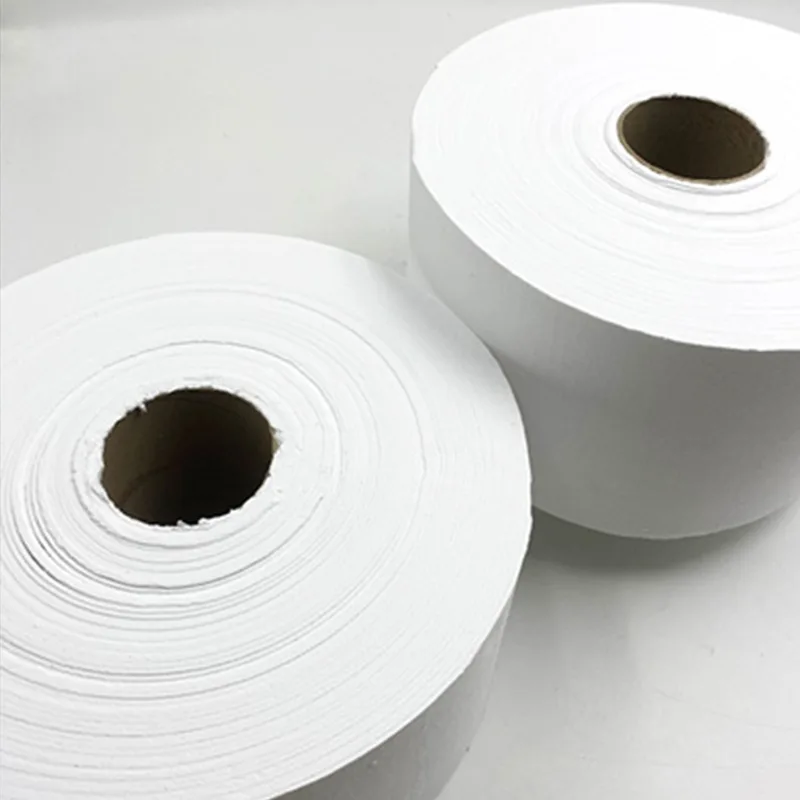
Battery separator tissue
The separator felt is primarily used as the base material for lead-acid battery separators. The composite separators made with S-BM offer good vibration resistance and mechanical strength, resulting in batteries with strong starting power and a longer lifespan.
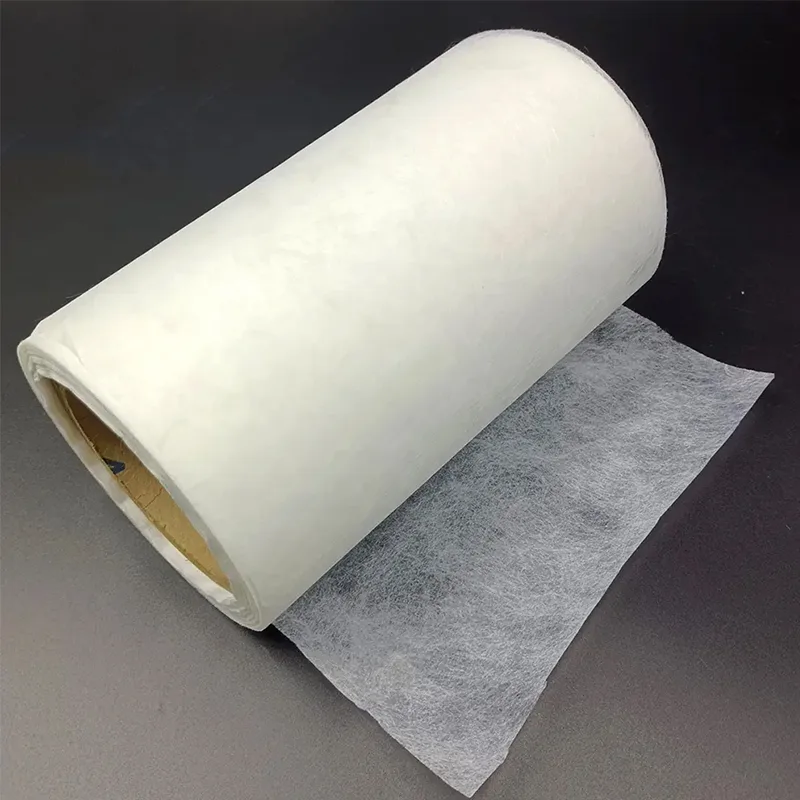
Roofing Tissue/Pipe Tissue
The S-RM series mat is used to make
modified bitumen waterproofmembranes
and fiberglass shingles, enhancing weather
resistance and impermeability, extending
service life, and is suitable for roofing and
insulation layers. The S-PM series mat is used
for underground pipeline waterproofing
offering excellent resistance to
environmental factors, extending pipeline
life, and reducing maintenance costs.
Boost Your Business With Custom Fiberglass Mat
NQ provides comprehensive fiberglass mat industry solutions. With our high-quality fiberglass mat, you can guarantee the monitoring quality inspection of the entire process from raw materials to production to shipment. Ensure that our professional-grade fiberglass mat enhances your brand.
Настройка цвета
Мы предлагаем широкий выбор цветовых решений, включая черный, белый, желтый, оранжевый, синий, и металлические цвета, такие как золото и серебро, а также разнообразные яркие специальные цвета. Мы можем подобрать цвета в соответствии с вашими потребностями и предпочтениями для вашего проекта. Пожалуйста, не стесняйтесь обращаться к нам, если у вас есть какие-либо требования.
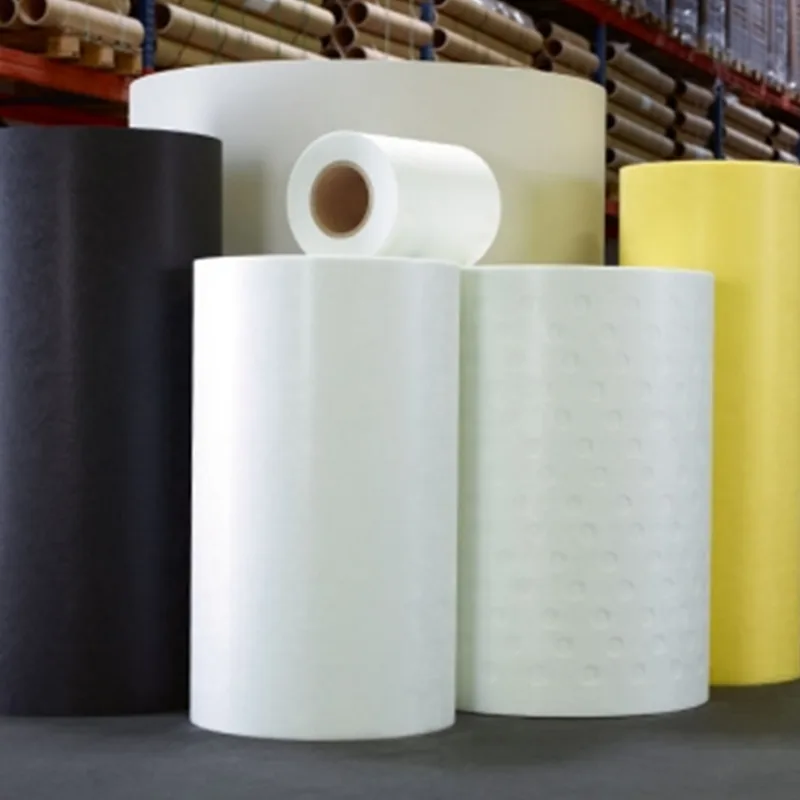
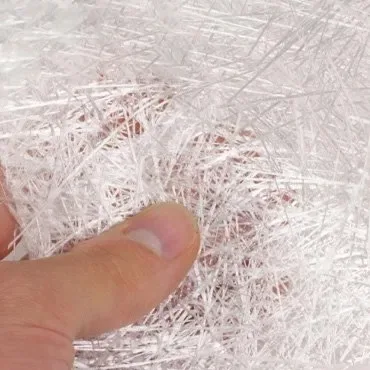
Binder Customization
Short-cut chopped strands generally come in two types of bonding materials: emulsion and powder. Both have their advantages. Emulsion-bonded chopped strands appear smoother and have a better shape, with fewer loose fibers, making them recommended by manufacturers. Emulsion-bonded chopped strands are typically used in large products with fewer contours. On the other hand, powder-bonded chopped strands can disperse during cutting and are more suitable for complex structures like molds.
Персонализация упаковки
Для внутренней упаковки мы используем термоусадочную пленку, для отдельных рулонов - полиэтиленовые пакеты, а для внешней упаковки - картонные коробки или пластиковые тканые мешки. Это обеспечивает защиту от влаги и сохранность продукции при транспортировке и хранении. Кроме того, мы предлагаем индивидуальные варианты упаковки, отвечающие специфическим потребностям наших клиентов.
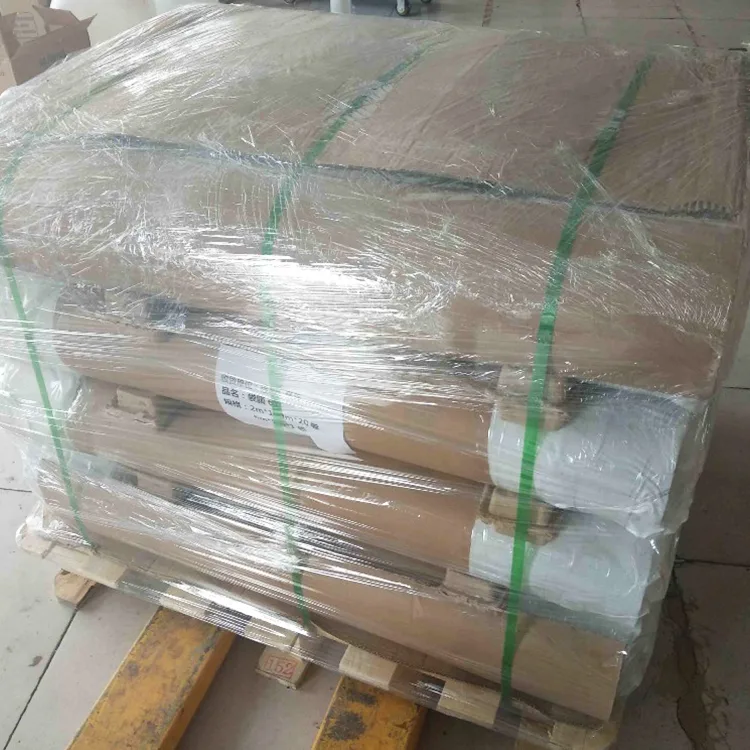
Fiber Glass Mat Specifications
Наши стекловолоконные маты доступны в различных спецификациях для точного соответствия требованиям вашего проекта. Пожалуйста, свяжитесь с нами, чтобы узнать конкретные параметры для обеспечения оптимальной производительности и удовлетворения ваших уникальных потребностей.
Место происхождения | Цзянсу, Китай |
Тип коврика | Коврик для отбивки стежков |
Тип стекловолокна | E-glass, S-glass, C-glass and AR-glass, etc |
Мягкость | Мягкий |
Название бренда | NQ |
Area Weight | 250±13g/㎡,300±20g/㎡,450±20g/㎡,625±25g/㎡,900±30g/㎡,1250±40g/㎡,etc |
Тип переплета | Порошок/эмульсия |
Совместимые смолы | Смолы UP, VE, EP, PF |
Прочность на разрыв | 90-250 N |
Содержание влаги | ≤0,2% |
Контейнер 40FT | 20 тонн |
Контейнер 20 футов | 10 тонн |
Ширина | 50-3200 мм |
Содержание переплета | 2-13% |
Название предмета | Стекловолокно рубленые пряди матирования, кровельные стекловолокна маты, стекловолокна трикотажные комбо маты, стекловолокна тканые ровинга комбо маты, стекловолокна поверхности маты, стекловолокна ткани препрег |
Цвет | белый, черный, серый и т.д. |
Приложение | Гидроизоляция, изоляция и укрепление конструкций зданий; облегчение веса автомобилей, кораблей; промышленная фильтрация, изоляционные материалы; стимулирование роста растений; улучшение характеристик материалов |
Продукт | Стекловолоконные маты |
Технические характеристики | 100/120/150/225/300/380/450/600/900gsm,Customized |
Ширина рулона | 1040/1250/1270/1500mm,Customized |
Вес рулона | 30-40 кг, на заказ |
NQ Fiberglass Mat Production Process
1. Отрежьте необработанную пряжу
We use high-quality fiberglass raw materials from the Monolith Group, the world’s largest fiberglass yarn manufacturer including Saint-Gobain, which is 20% stronger than standard fiberglass yarn.
2. Приложение для переплета
Powders include polyester resin powder, epoxy resin powder, etc. and emulsions include polyacrylate emulsion, butadiene emulsion, etc. You can choose according to your needs.
3.Обработка роллов
The roller pressing equipment with fully automatic integrated detection system greatly improves production efficiency and product quality. Different types of glass fiber mats can be matched with suitable equipment according to your specific needs and processing characteristics.
4. Сушильная обработка
An oven is used to dry out excess moisture and bond the glass fibers together. By carefully controlling temperature and time, the moisture can be precisely evaporated while minimizing the risk of thermal damage to the material.
5. Сухая обрезка
Once the mat has cured, we utilize state-of-the-art trimming equipment to trim it to size and remove any irregular edges or excess material. Ensure the cut.
6.Обработка упаковки
A thorough quality inspection is then carried out at the end to check for defects such as uneven thickness, delamination or foreign matter. Once the felt meets quality standards, it is packaged and prepared for shipment.
SF
Склад и завод
Общий годовой доход
Квалифицированный рабочий
Partner With NQ To Elevate Your Project To Success
Premium quality:We have 35 production lines, using high-quality fiberglass raw materials and passing multiple quality inspection processes to ensure that each roll of fiberglass blanket meets international standards.
Competitive price:With our strong production capacity and raw material procurement advantages, we can provide cost-effective products to help you reduce production costs while maintaining high quality.
Fully Customize:We provide comprehensive customization services, and can adjust specifications, thickness, density, etc. according to your specific needs to ensure that the needs of different application scenarios are perfectly met.
Сертификат







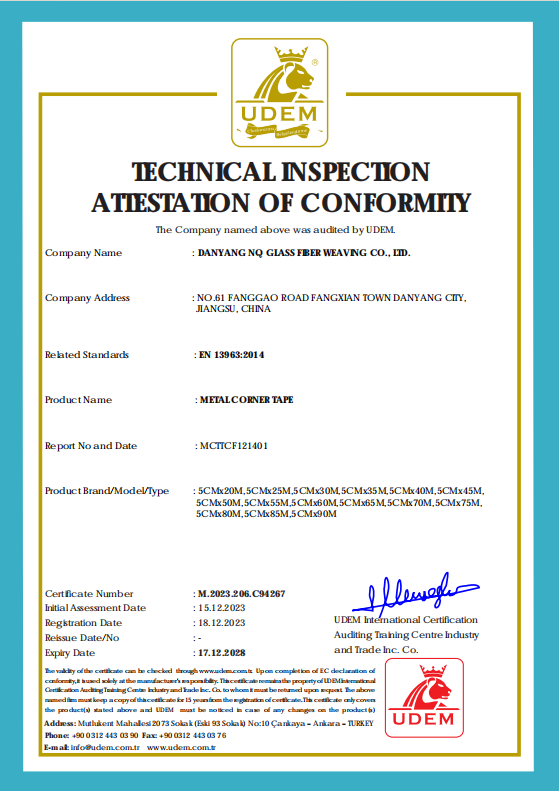
The Advantage Of The Fiberglass Mat
Our expertise in fiberglass blanket manufacturing has made us one of the most trusted fiberglass blanket manufacturers in China. With our advanced production facilities, we provide high-quality fiberglass blankets to customers around the world and meet the needs of various industrial applications. Our fiberglass blanket products can help customers effectively reduce costs and meet the needs of bulk purchases. The fiberglass blankets we provide have the following advantages:
Быстрое увлажнение
Смола быстро проникает в материал. Оптимизируя поверхностную энергию, структуру пор и другие рабочие параметры, мы можем увеличить скорость проникновения и равномерность смолы, тем самым улучшая общие характеристики и надежность композита.
Хорошая однородность
Стекловолоконные прокладки могут плотно прилегать к объектам. Благодаря равномерному распределению волокон и структуре пор, а также равномерному проникновению смолы, они обеспечивают плотное прилегание к объекту, что позволяет повысить эффективность обработки.
Не поддается коррозии
Стекловолоконные прокладки устойчивы к коррозии и обладают высокой степенью химической стабильности, эффективно противостоя эрозии, вызываемой различными агрессивными средами. Это гарантирует, что ваше оборудование или конструкция будут надежно работать в течение длительного времени даже в суровых условиях.
Термостойкость и устойчивость к плесени
Мат из стекловолокна обладает впечатляющими теплоизоляционными свойствами и устойчивостью к плесени. Он эффективно блокирует теплопроводность, обеспечивая превосходный теплоизоляционный эффект. Кроме того, он противостоит образованию плесени, сохраняя сухость и чистоту, что продлевает срок его службы.
Совместимость
Стекловолокнистый войлок демонстрирует отличную совместимость с различными смолами, включая полиэфирную, виниловую и эпоксидную смолу. Такая совместимость позволяет формировать композитные материалы, обладающие высокой прочностью, высоким модулем упругости, коррозионной стойкостью и износостойкостью. Как следствие, он предлагает больше возможностей для реализации ваших проектов.
Простой в обращении
Использовать или устанавливать стекловолоконные маты очень просто. Их превосходная гибкость позволяет легко адаптировать их для установки на сложных формах и поверхностях без необходимости сложной предварительной подготовки или резки, что упрощает процесс.
The Advantage Of The Fiberglass Mat





As a senior purchasing manager in the construction industry, I recognize the importance of quality materials for project success. Since partnering with this fiberglass mat manufacturer, I’ve gained confidence in their products. Made from premium raw materials, their mats are durable, weather-resistant, and stable in extreme conditions. The consistent quality across batches reduces risks and uncertainties. Additionally, their products offer great value, helping us save on procurement costs and reallocate resources effectively.

Уильям Бейкер
Предприниматель
In automotive manufacturing, material choice impacts performance, safety, and durability. The fiberglass mats from this manufacturer have exceeded our expectations. Their strength, toughness, and stability are industry-leading, ensuring excellent performance in complex environments. Their competitive pricing helps us manage costs without compromising quality. Additionally, their after-sales service and technical support are top-notch, resolving issues quickly. I’m very satisfied with this partnership and look forward to continuing it.

Оливер Беннетт
Предприниматель
Shipbuilding demands high-performance materials, and this manufacturer’s fiberglass mats meet our needs perfectly. Their mats offer excellent fire and waterproof properties, protecting ship structures from damage. They are lightweight yet strong, reducing the ship’s overall weight and improving efficiency. Their competitive pricing helps manage procurement costs while ensuring quality. Additionally, they provide tailored solutions and emphasize strong customer collaboration. I’m very satisfied with this partnership and look forward to continuing our work together.

Сэмюэл Карлсон
Предприниматель
Application Of Glass Fiber Mat
Fiberglass mat is a versatile material used in construction for reinforcement, automotive manufacturing for lightweight parts, shipbuilding for durable, corrosion-resistant components, and in sports equipment for strength and performance. It’s also widely used for electrical insulation due to its heat and electrical resistance.
Химическая инженерия
In chemical engineering, fiberglass mat is used for lining pipes, containers, and tanks, offering corrosion and heat resistance, as well as for coatings and reinforcement in reactors.
- Толщина: 1.5-4mm
- Плотность: 250-600g/m²
- High-temperature resistance: 300℃
- Corrosion resistance: Strong
Строительная промышленность
In construction, fiberglass mat is used for reinforcement in plastering, walls, and flooring, offering strength, durability, and crack resistance. It also enhances roofing stability.
- Толщина: 1.5-4mm
- Плотность: 250-600g/m²
- High-temperature resistance: 200-300℃
- Corrosion resistance: Excellent
Спорт и досуг
In sports and leisure, fiberglass mat is used in equipment like surfboards, skateboards, and bicycles for its lightweight, strength, and durability, improving performance and resistance to wear.
- Толщина: 1.5-3mm
- Плотность: 200-400g/m²
- High-temperature resistance: 150-250℃
- Corrosion resistance: Good
Электронная и электрическая промышленность
In the electronics and electrical field, fiberglass mat is used for insulation in components like transformers and circuit boards, offering high-temperature resistance and electrical insulation.
- Толщина: 0.8-2mm
- Плотность: 200-400g/m²
- High-temperature resistance: 180-250℃
- Corrosion resistance: Excellent
Frequently Asked Questions
Below you can find some frequently asked questions about shipment and MOQ. If you have any further questions, please feel free to contact us.
Какова ваша MOQ?
Наш MOQ обычно составляет 1x20ft контейнер. Но мы принимаем меньшее количество для вашего пробного заказа. Пожалуйста, не стесняйтесь сообщить нам ваш план для
покупая, мы предложим цену, соответствующую вашему количеству. И мы надеемся, что вы увеличите количество заказов после того, как вы проверите наши
качество продукции и узнать о наших услугах.
Какой порт отгрузки?
Мы отправляем товары через порт Шанхая.
Сколько цветов в наличии?
Мы можем сделать пользовательский цвет, когда достичь нашего MOQ qty.
Наши обычные цвета: белый, желтый, зеленый, синий, оранжевый, красный и т.д.
Какой формат файла вам нужен, если я хочу сделать свой собственный дизайн?
Для печати дизайна этикетки нам нужен файл AI или PDF для создания печатного шаблона.
Каков срок доставки?
Время доставки составляет около 20 ~ 30 дней после получения депозита.
Каково время выборки?
Обычно на изготовление образцов уходит 7-10 дней.
Какой способ доставки доступен?
По морю до назначенного порта.
Какой способ оплаты является приемлемым?
1. Безотзывный аккредитив, наличные, PayPal, кредитная карта и денежные переводы T/T.
2.30% T/T депозит заранее, 70% баланс перед отгрузкой после представления готового груза.
3.L/C (безотзывный аккредитив по предъявлении)
Если вам нужен пользовательский размер, такой как вес грамма и размер ячейки и т.д. или частный логотип, пожалуйста, не стесняйтесь запрашивать нас!
Fiberglass Mat FAQ
Для чего используется стекловолоконный мат?
Fiberglass mat is a non-woven fabric made by interweaving fiberglass filaments into a mesh structure, which are bonded together through chemical adhesives or mechanical means.
Its main uses include:
Reinforcement of Composite Materials: Fiberglass mat is commonly used to reinforce composite materials like unsaturated polyester resin and epoxy resin, enhancing their strength and rigidity.
Hand Lay-Up Process: In hand lay-up molding, fiberglass mat is used to strengthen resin-based composite materials.
Pultrusion Process: Fiberglass mat is used in the pultrusion process to enhance the longitudinal and transverse strength of products, preventing cracking.
Thermal Insulation: Fiberglass mat has excellent thermal insulation properties and is widely used in construction, shipbuilding, automotive, and other fields for thermal insulation.
Filtration Material: Fiberglass mat is used in air and liquid filters due to its good filtration performance.
Sound Insulation and Noise Reduction: Fiberglass mat is used in the automotive industry for sound insulation, noise absorption, vibration reduction, and fire resistance.
Roof Waterproofing: Fiberglass mat is used as the substrate in roofing waterproofing membranes due to its excellent waterproofing properties.
In conclusion, fiberglass mat is widely applied in various fields such as composite material reinforcement, thermal insulation, filtration, sound insulation, and roof waterproofing.
Что лучше, стекловолоконный мат или ткань?
Here’s a comparison table of fiberglass mat vs fiberglass cloth:
| Характеристика | Стекловолоконный мат | Стекловолоконная ткань |
|---|---|---|
| Manufacturing Process | Made from randomly bonded short glass fibers. | Made from woven continuous glass fibers. |
| Strength | Generally lower tensile strength compared to cloth. | Higher tensile strength due to its woven structure. |
| Гибкость | More flexible, adapts easily to irregular shapes. | Less flexible, best for flat or structured surfaces. |
| Surface Finish | Typically smoother, suitable for smooth surfaces. | Rougher texture, better for structural applications. |
| Вес | Heavier, used in thicker applications. | Lighter, more suitable for weight-sensitive applications. |
| Долговечность | Less durable in terms of tensile strength. | More durable, especially in high-stress applications. |
| Applications | Common in boat building, insulation, and surface repairs. | Used in aerospace, automotive, and high-performance applications. |
| Стоимость | Generally cheaper than fiberglass cloth. | More expensive due to higher strength and precision. |
This comparison helps in deciding which material to use depending on the specific requirements, like strength, flexibility, weight, and cost.
Для чего используется стеклоткань?
Fiberglass cloth is a material made from woven glass fibers, known for its light weight, high strength, corrosion resistance, and high-temperature resistance. It is widely used in multiple fields.
Main Uses:
Composite Material Reinforcement: Fiberglass cloth is commonly used to reinforce composite materials, such as fiberglass, enhancing their mechanical strength and durability.
Electrical Insulation: Due to its excellent electrical insulation properties, fiberglass cloth is widely used in electronic products, such as circuit boards.
Строительная промышленность: In the construction field, fiberglass cloth is used for wall reinforcement, exterior wall insulation, roofing waterproofing, and enhancing materials like cement, plastic, asphalt, marble, and mosaic.
Shipbuilding: Fiberglass cloth is widely used in the hand lay-up molding process for ship hulls, storage tanks, cooling towers, vehicles, and other applications.
Автомобильная промышленность: Fiberglass cloth is used in the manufacturing of car body parts to enhance the strength and safety of vehicles.
Аэрокосмическая промышленность: Fiberglass cloth is used in the manufacturing of aircraft and spacecraft, providing lightweight and high-strength properties that improve fuel efficiency and load capacity.
Химическая промышленность: Fiberglass cloth is used for corrosion protection in storage tanks and pipelines, extending the service life of equipment.
Electronics: Fiberglass cloth is used in electronic components for insulation and shielding, protecting components from external electromagnetic interference.
In conclusion, fiberglass cloth plays an important role in many fields, including composite material reinforcement, electrical insulation, construction, shipbuilding, automotive, aerospace, chemical, and electronics, due to its excellent performance.
Портится ли стекловолоконный мат?
Fiberglass mat is a non-woven fabric made from glass fibers, known for its excellent high-temperature resistance, corrosion resistance, and insulation properties.
Storage Conditions:
Fiberglass mat should be stored in a dry, well-ventilated environment, away from direct sunlight and high humidity, to prevent the material from absorbing moisture or aging.
Lifespan:
With proper storage, fiberglass mat typically has a long lifespan.
Considerations:
Prolonged exposure to high temperatures, humidity, or chemical corrosive environments may cause the performance of fiberglass mat to degrade.
Therefore, it’s recommended to inspect its appearance and performance before use to ensure it meets the required standards.
Сколько слоев стекловолоконного мата использовать?
The number of layers of fiberglass mat to use depends on the specific application and the desired strength. Here are some general recommendations for different fields:
Boat Building:
Fiberglass mat is commonly used in the base layers of a boat’s hull to provide strength, while fiberglass cloth is used for the surface layer for a smoother finish. The exact number of layers depends on the design requirements and the desired strength.
Roofing:
In roofing applications, the number of fiberglass mat layers depends on the roof area and the expected usage. For roofs without foot traffic, one layer of 450g/m² fiberglass mat is typically recommended. For roofs with foot traffic, one layer of 600g/m² fiberglass mat or two layers of 450g/m² fiberglass mat are recommended.
General Recommendation:
When using fiberglass mat, it’s important to determine the number of layers based on the specific application and design requirements. Typically, a base layer of fiberglass mat provides strength, while the surface layer uses fiberglass cloth for a smoother finish. In roofing, the number of layers depends on the area and intended use.
Please note that these recommendations are general guidelines. The actual number of layers should be adjusted according to specific project needs and design criteria.
Можно ли использовать эпоксидную смолу на стекловолоконном мате?
Эпоксидная смола может быть использована для стекловолоконных матов. Эпоксидная смола - это важный полимерный материал, состоящий в основном из эпоксидной смолы и отвердителя, обладающий такими превосходными характеристиками, как коррозионная стойкость, термостойкость, вибростойкость, водонепроницаемость и сильные адгезионные свойства. Благодаря этим свойствам эпоксидная смола широко применяется в различных областях, включая строительство, искусственное формование, компрессионное формование, электронику, автомобильную, морскую, аэрокосмическую промышленность и многое другое.
При нанесении на стекловолоконный мат эпоксидная смола может повысить его прочность, долговечность и устойчивость. Эпоксидная смола может проникать между волокнами стекловолоконного мата, образуя прочный клейкий слой, который улучшает общие эксплуатационные характеристики мата. Кроме того, химическая и погодная стойкость эпоксидной смолы позволяет защитить стекловолоконный мат от воздействия таких факторов окружающей среды, как влага и коррозия.
В практическом применении при обработке стекловолоконного мата эпоксидной смолой следует обратить внимание на следующие моменты:
Выберите подходящую эпоксидную смолу и отвердитель: Убедитесь, что выбранные эпоксидная смола и отвердитель совместимы со стекловолоконным матом и соответствуют требуемым эксплуатационным характеристикам.
Правильная пропорция смешивания: Следуйте инструкциям производителя для правильного смешивания эпоксидной смолы и отвердителя, чтобы обеспечить оптимальные характеристики отверждения.
Унифицированное приложение: Равномерно нанесите смешанную эпоксидную смолу на стекловолоконный мат, избегая пузырей и незакрытых участков.
Условия отверждения: Убедитесь, что эпоксидная смола отверждается при соответствующих условиях, таких как температура, влажность и время, для достижения наилучшего эффекта отверждения.
Меры предосторожности: В процессе отверждения эпоксидная смола может выделять вредные газы, поэтому работать с ней следует в хорошо проветриваемом помещении и использовать соответствующие средства индивидуальной защиты.
В целом, эпоксидная смола может быть использована на стекловолоконных матах для улучшения их характеристик и увеличения срока службы. При нанесении следует обратить внимание на выбор подходящей эпоксидной смолы и отвердителя, правильное соотношение компонентов, равномерное нанесение, условия отверждения и меры предосторожности.
Что лучше, стекловолоконный мат или ткань?
Что касается вопроса о том, что лучше - стекловолоконный мат или стеклоткань, то здесь нет абсолютного ответа, поскольку каждый из них обладает различными характеристиками и преимуществами, которые подходят для разных сценариев применения.
| Характеристика | Стекловолоконный мат | Стекловолоконная ткань |
|---|---|---|
| Материал | Made of chopped strands of glass fibers, randomly oriented. | Made of woven glass fibers, arranged in a structured pattern. |
| Strength | Provides moderate strength but less than fiberglass cloth. | Offers higher strength due to the woven structure. |
| Гибкость | More rigid, suitable for flat or slightly curved surfaces. | More flexible, ideal for tight curves and complex shapes. |
| Вес | Heavier compared to cloth of the same thickness. | Lighter than mat for the same thickness. |
| Wet-Out Quality | May not wet out as easily or clearly with epoxy; requires more resin. | Wets out well with epoxy, providing a clearer finish. |
| Долговечность | Generally durable but may have slightly lower strength. | More durable and long-lasting due to the woven structure. |
| Applications | Ideal for basic reinforcement, hulls, and areas with minimal flex. | Used for high-strength applications such as automotive and aerospace. |
| Стоимость | Usually less expensive. | Generally more expensive due to the woven fibers. |
| Ease of Use | Easier to work with for larger flat surfaces. | Requires more precision and skill, especially for curves. |
| Отделка | Less smooth finish, often requires sanding. | Smooth and finer finish, ideal for a clean surface. |
Стекловолоконный мат
Характеристики и преимущества:
- Гибкость: Маты из стекловолокна обычно обладают хорошей гибкостью, что делает их удобными в обращении и установке, особенно при заполнении неровных поверхностей или зазоров.
- Поглощение влаги: Некоторые стекловолоконные маты после специальной обработки могут обладать хорошими влагопоглощающими свойствами, что может улучшить характеристики материала в конкретных областях применения.
- Экономическая эффективность: По сравнению с некоторыми видами стеклоткани стекловолоконные маты могут предложить более выгодную стоимость, особенно для крупномасштабного применения.
- Арматура: При использовании в качестве базового слоя для покрытий, шпаклевок, гипса и других материалов стекловолоконные маты могут значительно повысить прочность и долговечность поверхности, предотвращая растрескивание.
Стекловолоконная ткань
Характеристики и преимущества:
- Высокая прочность: Стеклоткань обычно имеет очень высокие показатели прочности на растяжение и изгиб, способна выдерживать значительные усилия, что делает ее пригодной для применения в областях, требующих высокопрочной поддержки.
- Устойчивость к коррозии: Обладает хорошей устойчивостью к большинству химических сред и может использоваться в течение длительного времени в кислой или щелочной среде.
- Термостойкость: Обладает превосходными высокотемпературными характеристиками и может использоваться в течение длительного времени в условиях высоких температур.
- Свойства изоляции: Это отличный изоляционный материал с хорошими электро- и теплоизоляционными свойствами.
- Универсальность: Стекловолокнистая ткань поставляется в различных вариантах плетения и спецификациях, таких как полотняное, саржевое и двунаправленное плетение, удовлетворяя различные потребности промышленности.
Сравнение сценариев применения
- Строительная промышленность: Маты из стекловолокна часто используются для изоляции стен и армирования поверхностей, в то время как стеклоткань больше подходит для армирования строительных конструкций, ремонта крыш и других применений, требующих высокой прочности.
- Аэрокосмическая промышленность: Оба материала могут использоваться при производстве и ремонте самолетов, ракет и других аэрокосмических аппаратов, но конкретный выбор зависит от требуемых характеристик и конструктивных особенностей.
- Автомобильная промышленность: Стеклоткань чаще всего используется при производстве и ремонте автомобильных деталей, таких как кузова и крышки двигателя.
Заключение
В целом, стекловолоконные маты и стеклоткань имеют свои достоинства, и выбор лучшего варианта зависит от конкретного сценария применения и требований. Маты из стекловолокна могут быть более подходящими, если требуется гибкость, экономичность или особые свойства поглощения влаги. С другой стороны, стеклоткань может оказаться лучше, если требуется высокая прочность, коррозионная стойкость, жаростойкость или изоляционные свойства. Поэтому, делая выбор, следует полностью учитывать реальные потребности и условия применения.
Насколько прочен стекловолоконный мат?
The strength of a fiberglass mat depends on several factors such as its type, thickness, resin used, and the specific application. Here’s a breakdown:
Material Strength:
Fiberglass mat is made from chopped glass fibers, which are randomly oriented. This gives it a decent level of strength but not as much as woven fiberglass cloth. The lack of fiber orientation in mats means they don’t have the same tensile strength as woven fabrics, which align fibers in a uniform direction.Strength Rating:
Fiberglass mat strength can vary based on weight and type:- Chopped Strand Mat (CSM): Typically has a tensile strength ranging from 2,000 to 4,000 psi (pounds per square inch) depending on the type and weight of the mat.
- Woven Roving: Although not a mat, this is another form of fiberglass that typically has much higher tensile strength (around 10,000 psi or more) and is often preferred for structural applications.
Layering:
The strength of fiberglass mat can be increased by adding multiple layers. Each additional layer adds to the overall strength and durability. For instance, a mat with multiple layers used in boat building or other structural projects can withstand significant loads and stresses.Resin Impact:
When combined with resin (typically polyester, vinylester, or epoxy), the fiberglass mat’s strength increases as the resin bonds the fibers together, providing rigidity and enhancing its overall strength. Epoxy resin, in particular, increases the strength of the mat significantly compared to polyester.
Conclusion:
Fiberglass mats are strong enough for many applications, such as in boat hulls, roofing, and other general reinforcements, but for high-strength, high-stress applications, woven fiberglass cloth or roving would be a better choice. The strength of fiberglass mats will also depend on the type, layers, and resin used.
Является ли стекловолоконный мат водонепроницаемым?
Fiberglass matting itself is не является водонепроницаемым по своей сути, but it has the potential to become waterproof when combined with a waterproof resin or other coatings. Here’s how it works:
Fiberglass Matting Characteristics:
- Fiberglass mat is made from chopped glass fibers that are bonded together with a binder. While the matting itself does not naturally repel water, it is resistant to moisture and will not degrade or dissolve in the presence of water, unlike some other materials.
Waterproofing with Resin:
- To make fiberglass matting waterproof, it is typically used with a waterproof resin, such as epoxy resin, polyester resin, or vinylester resin. The resin binds the fiberglass fibers together and fills in the spaces between them, creating a waterproof barrier.
- Epoxy resin, in particular, is known for its excellent water resistance and is often used for applications that require waterproofing, such as in boat building, roofing, and waterproof coatings.
Applications:
- When fiberglass matting is used with a resin in applications like boat hulls, waterproof roofing, or waterproof barriers in construction, it forms a strong, durable, and waterproof layer that resists water infiltration.
- In cases like roofing systems, fiberglass mat is often used as part of a multi-layer system where it provides structural reinforcement and helps maintain a waterproof surface.
Environmental Resistance:
- Fiberglass matting is highly resistant to moisture and water over time, as the glass fibers themselves do not absorb water. However, without proper resin treatment, the matting alone would not provide full waterproofing.
Conclusion:
Fiberglass matting is not waterproof by itself, but when combined with a suitable waterproof resin, it can effectively become waterproof, making it suitable for applications where moisture and water resistance are crucial.
Почему люди используют стекловолокно?
People use fiberglass for a wide range of applications due to its unique combination of properties that make it highly versatile. Here are the key reasons why fiberglass is widely used:
1. High Strength-to-Weight Ratio
- Fiberglass is lightweight but strong, making it ideal for use in applications where both strength and weight are important. It is stronger than many metals (like aluminum) while being much lighter, which is why it’s used in industries like automotive, aerospace, and marine.
2. Устойчивость к коррозии
- Fiberglass is highly resistant to corrosion from chemicals, moisture, and environmental conditions. This makes it an excellent material for use in harsh environments, such as in marine vessels, chemical tanks, и construction (e.g., roofing, pipes).
3. Долговечность
- Fiberglass is durable and long-lasting. It can withstand extreme temperatures and physical wear, which makes it suitable for both indoor and outdoor applications.
4. Свойства изоляции
- Fiberglass is an excellent thermal and electrical insulator. It’s commonly used for insulation in buildings (e.g., fiberglass insulation batts), in electrical components, and for applications requiring resistance to temperature changes.
5. Flexibility and Molding Capabilities
- Fiberglass can be easily molded into complex shapes, making it highly versatile for various industries. It is often used in molding applications for creating custom parts for the automotive, aerospace, and construction industries.
6. Lightweight and Cost-Effective
- Compared to metals like steel or aluminum, fiberglass is often more cost-effective and provides significant weight savings, which is a critical factor in many industries such as automotive manufacturing and boat building.
7. Water Resistance
- Fiberglass is inherently water-resistant and, when combined with resin, it forms a strong, waterproof barrier. This makes it ideal for boat hulls, swimming pools, и waterproof coatings in construction.
8. Reinforcement Material
- Fiberglass is often used as a reinforcing material in composite structures. Combined with resins (like epoxy or polyester), it creates strong, durable composite materials that are used in aerospace, construction, и automotive manufacturing.
9. Fire Resistance
- Fiberglass is non-combustible and has excellent fire-resistant properties, making it an important material for applications requiring fireproofing, such as construction, electrical systems, и protective gear.
10. Ease of Maintenance
- Products made with fiberglass are often easy to maintain, resistant to UV degradation, and do not require frequent replacements. This makes it ideal for outdoor equipment, automobiles, и construction materials.
Summary:
Fiberglass is used for its прочность, lightweight nature, corrosion resistance, durability, и insulating properties. It is a key material in various industries including construction, marine, automotive, aerospace, и insulation.
Для чего используются стекловолоконные маты?
Fiberglass matting is a versatile material used in a variety of applications due to its strength, durability, and resistance to environmental factors. Here are some common uses of fiberglass matting:
1. Boat Building and Marine Applications
- Fiberglass matting is commonly used in boat hulls and marine structures to provide strength and resistance to water. When combined with resin (such as polyester or epoxy), it forms a rigid, waterproof layer ideal for boat construction and repair.
2. Roofing and Waterproofing
- In roofing systems, fiberglass matting is used as a base layer in waterproofing membranes. It helps reinforce roofing systems, preventing leaks and ensuring long-lasting protection against moisture.
3. Автомобильное производство
- Fiberglass matting is used in automotive parts like body panels, fenders, and interior components. It provides strength and impact resistance while reducing weight, making it a key material in the automotive industry for creating durable, lightweight components.
4. Construction and Reinforcement
- Fiberglass matting is often used in construction to reinforce materials such as concrete or plaster. It helps improve the structural integrity and durability of walls, ceilings, and floors, particularly in drywall applications or when reinforcing masonry walls.
5. Pipes and Tanks
- Used to reinforce pipes and storage tanks, fiberglass matting provides resistance to corrosion and impact. It’s commonly employed in industries where chemicals are transported or stored, such as in chemical processing plants.
6. Swimming Pools
- In swimming pool construction and repairs, fiberglass matting is often applied as part of a multi-layer system to create a durable, water-resistant finish. It helps ensure that the pool structure is strong, resistant to cracking, and easy to maintain.
7. Лопасти ветряных турбин
- Fiberglass matting is used in the manufacture of wind turbine blades due to its strength-to-weight ratio, which makes it an ideal material for large, lightweight, yet strong structures that can withstand harsh weather conditions.
8. Insulation
- Fiberglass matting is often used in thermal and acoustic insulation applications. It can be found in buildings and vehicles as a material to reduce heat transfer and dampen sound, improving overall comfort and energy efficiency.
9. Waterproofing Fabrics
- Fiberglass matting is used as a reinforcing layer in waterproof fabrics and membranes, providing added durability for outdoor gear, such as tents, tarps, and protective covers.
10. Reinforced Plastic Composites
- Fiberglass matting is a key component in creating fiberglass-reinforced plastic composites. These composites are used in a wide range of applications such as industrial tanks, pipes, bathtubs, и countertops due to their strength, resistance to chemicals, and ease of maintenance.
11. Fireproofing
- Fiberglass matting is sometimes used in fireproofing applications, as it is non-combustible and offers fire-resistant properties. It can be integrated into fire-resistant panels and insulation systems to protect buildings and infrastructure.
Summary:
Fiberglass matting is widely used in industries such as marine, automotive, construction, roofing, и insulation due to its прочность, water resistance, corrosion resistance, и versatility. It is a critical material in products and applications that require reinforcement, durability, and protection from the elements.
Теряет ли стекловолоконная изоляция R-value со временем?
При нормальных условиях коэффициент R-value стекловолоконной изоляции не сильно уменьшается со временем. Показатель R-value - это важная метрика для измерения теплоизоляционных характеристик материала, отражающая его способность противостоять тепловому потоку.
Для стекловолоконной изоляции значение R-value определяется в первую очередь такими факторами, как толщина, плотность и структура волокон материала. Эти факторы устанавливаются в процессе производства материала и остаются относительно стабильными в процессе эксплуатации, не претерпевая значительных изменений с течением времени.
Однако следует отметить, что если стекловолоконная изоляция повреждена во время установки или использования, например, сжата, порвана или подвержена воздействию влаги, эти факторы могут повлиять на ее изоляционные характеристики, что приведет к снижению R-value. Кроме того, если материал подвергается воздействию экстремальных температур или влажности в течение длительного времени, это также может незначительно повлиять на его характеристики, но это воздействие обычно не настолько значительно, чтобы вызвать существенное снижение R-value.
Чтобы сохранить хорошие эксплуатационные характеристики стекловолоконной изоляции, во время ее использования рекомендуется соблюдать следующие правила:
- Убедитесь, что материал не поврежден во время укладки и что его первоначальная толщина и плотность сохранены.
- Не подвергайте материал длительному воздействию экстремальных температур или влажности, чтобы минимизировать влияние на его характеристики.
- Регулярно проверяйте целостность и работоспособность изоляционной системы, чтобы своевременно выявлять и устранять любые потенциальные проблемы.
В целом, R-value стекловолоконной изоляции не уменьшается со временем при нормальных условиях, но следует позаботиться о защите материала от повреждений и не подвергать его воздействию экстремальных условий, которые могут повлиять на его характеристики.
Что произойдет, если смола для стекловолокна намокнет?
Когда стекловолоконная смола (обычно это композитный материал, сочетающий стекловолокно и смолу, или просто смола; здесь подразумевается композит на основе смолы, армированной стекловолокном) намокает, последствия зависят от конкретного типа смолы, структуры композита и продолжительности воздействия воды. Ниже приведены некоторые возможные сценарии:
- Тип смолы:
- Ненасыщенная полиэфирная смола: Этот тип смолы относительно чувствителен к влаге до отверждения. Присутствие воды может привести к неполной реакции отверждения или образованию пузырьков, что может повлиять на прочность и внешний вид композита.
- Эпоксидная смола: Эпоксидная смола также обладает определенной чувствительностью к влаге до отверждения, но она, как правило, менее значительна, чем у ненасыщенной полиэфирной смолы. Однако, если смола находится в жидком состоянии и не отверждена, примешивание воды может нарушить процесс отверждения, что приведет к неполному отверждению, дефектам поверхности (таким как помутнение, белые или мутные участки, рябь, волны, впадины и пятна) и снижению эксплуатационных характеристик после отверждения.
- Термореактивная смола: После отверждения большинство термореактивных смол (включая композиты на основе армированных стекловолокном смол) обладают сильной устойчивостью к влаге, и кратковременное воздействие воды не оказывает на них существенного влияния.
- Композитная структура:
- Если вода может проникнуть между внутренними слоями композита, она может ослабить межслойное соединение и даже вызвать расслоение.
- Повреждение поверхностного защитного слоя (например, краски или гелевого покрытия) композита может увеличить риск проникновения воды.
- Продолжительность воздействия воды:
- Кратковременное воздействие воды может оказать лишь незначительное влияние на поверхность композита, например, оставить пятна от воды или повредить защитный слой.
- Длительное погружение в воду может привести к поглощению влаги матрицей смолы и ее расширению, что приведет к изменению размеров композита, снижению его эксплуатационных характеристик и даже разрушению структуры.
- Последующее лечение:
- Если композит намокнет, его следует быстро высушить, чтобы предотвратить негативные последствия длительного удержания воды.
- Для уже отвержденных композитов, если намокает только поверхность, внешний вид и характеристики обычно можно восстановить путем очистки и сушки.
- Если вода проникла внутрь композита, могут потребоваться более сложные ремонтные мероприятия, например, локальная замена поврежденных частей или укрепление всей конструкции.
В целом, последствия намокания стекловолоконной смолы зависят от различных факторов, включая тип смолы, структуру композита, продолжительность воздействия воды и последующие меры по обработке. При практическом применении необходимо принимать соответствующие защитные и ответные меры в зависимости от конкретной ситуации, чтобы обеспечить работоспособность и срок службы композита.
В чем разница между ровингом и матовым стекловолокном?
Ниже приводится английский перевод предыдущего текста:
Различия между ровингом и матовым стекловолокном
1. Структурные различия
- Ровинг из стекловолокна:
- Ровинг состоит из непрерывных пучков волокон, которые обычно не ткутся и не вяжутся, а сохраняют свою первоначальную форму, образуя пряди из полос волокон.
- Волокна ровинга обычно обладают высокой прочностью и жесткостью благодаря тому, что состоят из непрерывных волокон без точек прерывания.
- Стеклянный коврик:
- Маты, с другой стороны, изготавливаются из коротких или непрерывных волокон, которые беспорядочно распределяются, переплетаются и склеиваются (с помощью порошков или эмульсионных связующих) в листовой материал.
- Волокна в мате расположены относительно хаотично, но этот беспорядок придает мату хорошую гибкость и технологичность.
2. Области применения
- Ровинг из стекловолокна:
- Ровинг в основном используется в областях, требующих высокой прочности и жесткости, таких как производство армированных пластиков (например, армированного стекловолокном пластика), пултрузия и процессы намотки нитей.
- Он также широко используется в производстве высокоэффективных композитных материалов и структурных компонентов, таких как лопасти ветряных турбин, корабли и автомобильные детали.
- Стеклянный коврик:
- Благодаря своей хорошей гибкости и технологичности маты широко используются в процессах ручной укладки, напыления и непрерывного ламинирования.
- Он также часто используется при производстве различных изделий из армированного волокнами пластика (FRP), таких как трубы, резервуары и строительные панели, где он обеспечивает равномерное распределение волокон и хорошее проникновение смолы.
3. Характеристики производительности
- Ровинг из стекловолокна:
- Высокая прочность и жесткость, способность выдерживать значительные нагрузки на растяжение и изгиб.
- Хорошая направленность волокна, причем производительность вдоль направления волокна значительно выше, чем перпендикулярно ему.
- Стеклянный коврик:
- Хорошая гибкость, легко поддается обработке и приданию формы.
- Равномерное распределение волокон, способствующее равномерному проникновению смолы и ее отверждению.
- Доступны различные варианты толщины и веса для удовлетворения конкретных потребностей.
4. Упаковка и транспортировка
- Ровинг из стекловолокна:
- Обычно упаковывается в рулоны или пачки, удобные для транспортировки и хранения.
- Необходимо соблюдать осторожность, чтобы предотвратить разрыв волокон и загрязнение.
- Стекловолоконный мат:
- Маты обычно упаковываются в листы или рулоны и могут требовать дополнительных защитных мер (например, обертывания пластиковой пленкой) для предотвращения сбрасывания волокон и впитывания влаги.
- Во время транспортировки его следует держать в сухом и плоском состоянии, чтобы избежать деформации и повреждений.
В целом, между ровинговым и матовым стекловолокном существуют значительные различия в структуре, применении, эксплуатационных характеристиках, а также в упаковке и транспортировке. Выбор между ними зависит от конкретных требований к применению и технологических требований.




